Picture This
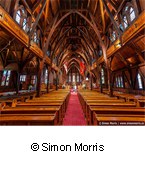 The New Zealand Historic Places Trust Pouhere Taonga (the Trust) has an important role in identifying, protecting, and promoting the country’s national heritage. It maintains a Register of New Zealand’s heritage places (the Register) to record and help protect those places.
The New Zealand Historic Places Trust Pouhere Taonga (the Trust) has an important role in identifying, protecting, and promoting the country’s national heritage. It maintains a Register of New Zealand’s heritage places (the Register) to record and help protect those places.
This is a resource for the public to better understand our heritage.
There are about 5,600 entries in the Register, including historic places, historic areas, wāhi tapu and wāhi tapu areas. Examples include buildings, bridges, archaeological sites, and shipwrecks.
An abridged version of the Register is available online – the Register Online.
The importance of images
For the Trust, having an image of each place (where appropriate – the Trust doesn’t display images of wāhi tapu) significantly enhances the Register Online. Images help with understanding, education, and protection of the places, and leave a pictorial legacy.
In 2008, only 17% of Register Online entries had an associated image.
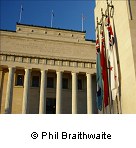 In June 2008, the Trust started a Register Images Project. The New Zealand Community Trust provided funding for a part-time worker to spend one year gathering images from existing sources and visiting historic places to take photographs (where possible).
In June 2008, the Trust started a Register Images Project. The New Zealand Community Trust provided funding for a part-time worker to spend one year gathering images from existing sources and visiting historic places to take photographs (where possible).
Although this project made a significant difference to the number of images used by 2009, the Trust knew that it was never going to be enough resourcing to populate the Register.
Turning to social media
Contributors’ feedback often expresses how pleased they are to have their photos displayed
To overcome this resourcing problem, the Trust turned to social media. A staff member saw the potential for Flickr to “crowd source” photographs for the Register. After some initial apprehension, the Trust’s senior management agreed to sign up with Flickr in 2009, for a subscription of about $25.
The Trust’s first post on Flickr was a call for people to post their historic place photos to the Trust’s Flickr collection. The Trust’s post explained clearly what sort of photos were needed. The Trust also explained how it would approve photos, seek permission to use them, and credit contributors. It included guidelines on photographing only public places and respecting others’ privacy.
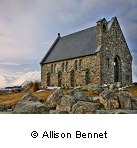 Subsequent posts listed specific places for which the Trust was seeking images.
Subsequent posts listed specific places for which the Trust was seeking images.
The Trust’s Flickr collection acts as a “holding pen” for all the photos it receives. The Trust reviews the photos and, if they’re suitable, the photos are attached to entries in the Register and displayed on the Register Online.
Did it work?
The cost would have been significantly higher and it would have taken many more years.
Yes. Since September 2009, the Trust has received about 1300 images in the Flickr collection, all of which are publicly viewable. This is a resource for the public to better understand our heritage. Images come from people who share an interest in history and photography and want to share their pursuits with the Trust and with others.
So far, of the extra 2000 images added to the Register Online, 401 have come through the Trust’s Flickr collection, and at no cost. The rest have come from other sources, including the Trust’s registration reports, site owners, and staff of the Trust who have taken photos during site visits or while on holiday.
The proportion of entries in the Register Online with at least one image rose from 54% in September 2009 to 90% in May 2013. The Register Online can display up to three images for each entry. Some of the images sourced through Flickr replaced existing poor quality images, or expanded the existing Register entries, so there is more work to be done.
What did it cost?
Since 2009, the Trust’s Flickr subscription has cost about $120. The Trust hasn’t paid for any of the images sourced from Flickr that it uses in the Register Online. Instead, image contributors are credited as originators and have given the Trust permission to use the photos.
Sometimes, the image contributors have also provided information about the place they’ve photographed, putting further links in the caption and comments beneath their images.
If the Trust had sourced those images through traditional means, such as commissioning someone to photograph the places, then the cost would have been significantly higher and it 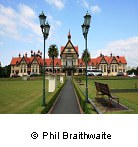 would have taken many more years to collect that many photographs.
would have taken many more years to collect that many photographs.
Using social media can have unanticipated benefits
Using Flickr has provided some unanticipated benefits. The Canterbury earthquakes destroyed some historic places and changed others forever. The Trust’s Flickr collection has helped to gather images of Christchurch’s historic places before and after the earthquakes to ensure that a record of the city’s history is not lost. There are several other Flickr collections dedicated to recording images of Canterbury after the earthquakes.
The Trust’s positive experience has encouraged it to explore other potential digital products.
Flickr also provides a mechanism for a form of dialogue between the Trust and the public. The Trust considers that dialogue leads to greater public understanding of what it does and how the public can support it.
When their images appear in the Register Online, contributors’ feedback often expresses how pleased they are to have their photos displayed – some feel “honoured” and others “thrilled”.
Social media can be easy to use
The Trust’s staff who use Flickr have not had any specialist training and find Flickr easy to use. There are frequent minor changes, such as the layout or specific functions, but this was something to keep pace with rather than a problem.
Connecting with your audience through social media, preserving necessary protocols
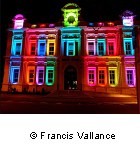 Social media is informal and government interactions with the public are usually formal – especially about legal requirements, such as copyright laws. The Trust has found that an easy balance can be struck between the two.
Social media is informal and government interactions with the public are usually formal – especially about legal requirements, such as copyright laws. The Trust has found that an easy balance can be struck between the two.
For example, the Trust posts an electronic letter to image providers seeking their permission to use their images and to credit the images to them. The response that comes back might be a cheery “feel free to use any of my photos for your project”, an appreciative “I would be honoured”, or a simple “yep”.
The name to credit might be a username, such as xyz98, rather than the person’s name. The Trust accepts usernames for crediting images to the photographer as readily as it accepts people’s actual names.
What now?
The Trust’s positive experience of using social media has encouraged it to explore other potential digital products. It is exploring how it can use its website, social media, and other technology to interact with people interested in historic places in New Zealand.
For example, in January 2013, the Trust launched a digital resource giving New Zealanders and tourists a window into stories of the Waikato war during the 1860s – a pivotal conflict during the New Zealand Wars.
The project is a collaboration between the Trust and Ngaa Muka; there is a Driving Tour application for tablets and smartphones and a brochure, new site signage and artwork at key battle sites in the Waikato, a website hosted by Hamilton and Waikato Tourism, and an education resource for secondary schools.
The Trust also uses Facebook to promote its work and specific properties it cares for, such as Wellington’s Old St Paul’s, Highwic in Auckland, and the Kerikeri Mission Station. The Trust also set up a page about Christchurch’s High Street Precinct as an online repository of stories, memories, and images about a part of the city that was badly damaged by the earthquakes.
Lessons the New Zealand Historic Places Trust learned
| Lessons |
|
|---|
